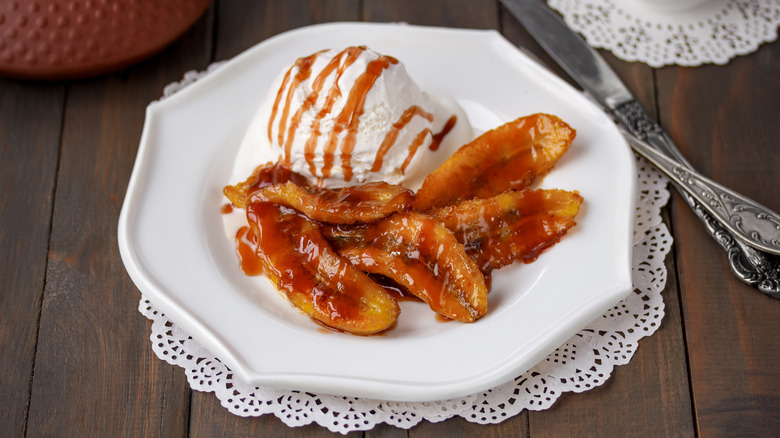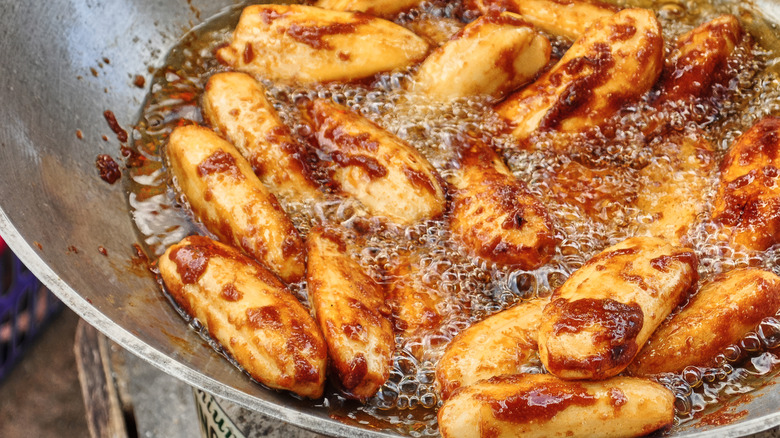Can You Actually Caramelize Bananas In The Microwave?
If you've ever had the privilege of dining in New Orleans and been privy to a tableside order of Bananas Foster (flambéed bananas in butter, sugar, and rum topped with ice cream), then you know how wonderfully decadent caramelized bananas can taste. And while we here at The Takeout love to sing the praises of microwave cooking, there are some steps you just can't skip when it comes to caramelizing. Baking expert and CEO of Dragonfly Cakes, Odette D'Aniello, tells us that she would never recommend it.
"True caramelization requires dry, direct heat to break down the sugars and develop that deep golden color and rich flavor," D'Aniello told The Takeout. "Microwaving bananas will soften them and bring out their natural sweetness, but it won't achieve the same caramelized effect you'd get from a stovetop or oven."
Fair enough, you can't cheat food science. But she does offer a quick fix if you're really jonesing for a banana sweet treat. "You could mix banana slices with brown sugar, butter, and a splash of vanilla before microwaving them in short bursts." Just know that it's not going to be anywhere close to the real deal. "For that true caramelized texture and flavor, nothing beats a hot pan with butter and sugar or a slow roast in the oven," she said. From texture issues to inconsistent caramelization, there's a few reasons why using a microwave for caramelizing bananas can lead to disappointing results.
Making the Maillard reaction
The microwave is designed for fast heating, but caramelization requires gradual, controlled heat to break down sugars and create that signature golden-brown hue. As D'Aniello put it, "The microwave is quick and convenient, making it great for a fast dessert topping. However, it lacks the Maillard reaction and direct caramelization that a stovetop or oven can achieve."
In the microwave, sugar tends to melt and burn in some spots while remaining undercooked in others. Not to mention there will be texture issues. Think about it: Microwaves work by heating water molecules in food, causing bananas to steam rather than sear. Instead of getting that meltingly tender bite, you'll be getting a spoonful of soggy, overcooked banana baby food. Blech.
Not to mention, caramelization isn't just about appearance; it's about developing complex, nutty, and sweet flavors. When it comes to baking, there are some steps you just can't skip. You need that dry, direct heat that allows sugar to undergo the Maillard reaction D'Aniello mentioned, creating those irresistible caramel notes. While the microwave might seem like a quick and convenient method to achieve this golden, syrupy goodness, it's just not the best option in this case. Plus, you're missing out on the opportunity to put on a show by flambéing your bananas, which is really half the fun. For the best and most delicious outcome, stick to the stovetop so you can savor its rich, golden results.

